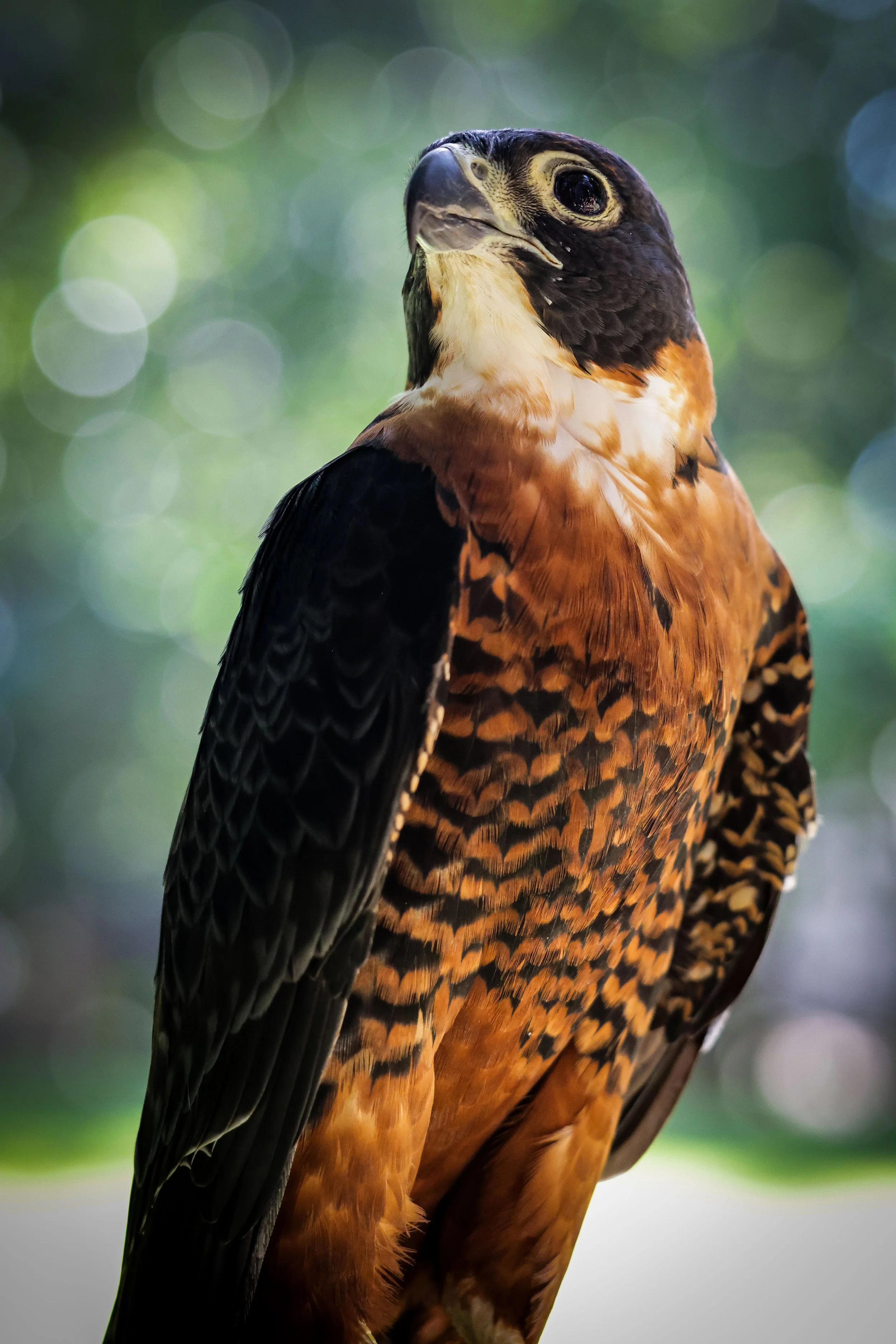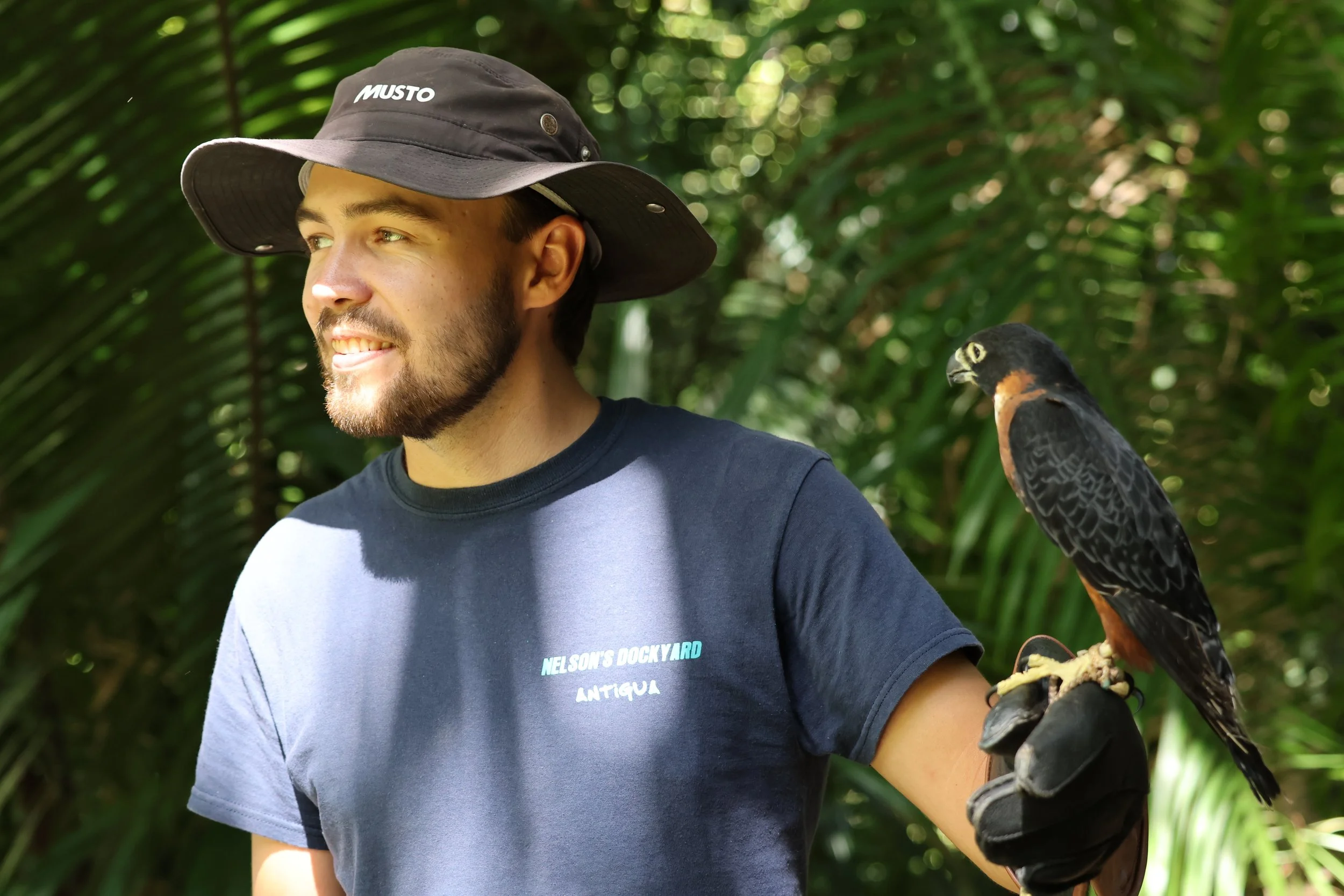Raptors
26th Nov 2024
After a rough and muddy drive from San Ignacio which had us wishing we were in a Land Rover and not a low slung Chevy SUV taxi which kept grounding, we arrived at the Belize Raptor Centre surrounded by dense unspoilt forest. Greeted by Reyna and Emil, we were handed leather gloves in anticipation of meeting the ‘ambassadors’, the raptors which call the center home.
Azula
The first bird to be exercised was Azula, a noisy and curious Roadside Hawk. Hatched by a private individual and kept for their daughter, Azula had imprinted on the girl and did not naturally develop the skills necessary to hunt or survive alone in the wild. Surrendered to the authorities with her brother after reports of her distinguished calls were made, it was soon found the diet of her sibling had been poor having been fed only small geckos. This had led to many health defects, including brittle bones, meaning he had to be euthanized. Azula was healthier but without instincts to hunt, is now exercised and cared for at the center.
Maya, the 7 year old Orange-breasted Falcon
Maya
Named after the mountains her species call home, Maya is now 7 years old, more than twice as old as those found in the wild, and a particularly rare and special bird. There are thought to be only 30 breeding pairs of Orange-breasted falcons left in the wild and their species is near threatened with fears they may go extinct in the next 10 years.
Maya came from a breeding program which had hoped to prolong the survival of the species which is severely threatened by habitat loss. From a young age it became clear Maya had poor sight and she was found to have cataracts which took away her crucial ability to hunt. In addition, she sufferers with anemia, which has dulled the yellow surround to her eyes and beak, and is a particularly fussy eater with expensive taste, only consuming very specific parts of quails everyday, at 12 BLZ dollars a pop.
Sparky
Sparky, a characterful Ferruginous Pygmy-Owl was found in a home and hatched and imprinted on a human who tried to care for him. His reliance on humans proved problematic and he could not be returned to the wild. Without a pair owl to help, pin feathers on his tiny head were removed with gentle head scratching.
Ghost
Barn owls are surrounded with superstition in Belize, their presence flying over someone's house is said to be a sign someone was about to die. Ghost, rescued from a home, is on a mission to educate the Belizian population and the next generation of their true nature in a effort to preserve the species which suffers from being shot or poisoned by rat poisons used in agricultural areas. A barn owl box and roosting program has been a great success, utilising cut sections of culvert mounted in agricultural barns. Their appetite for rodents minimises the cost of poisons used by farmers and is helping to stabilise the Barn owl population in Belize.
Kukulkan
Kukulcan is named after a feathered serpent god in the mythology and religion of Mesoamerica, in particular, the Yucatec Maya. Translating roughly to ‘plumed serpent’ a carving of Kukulcan featured on the pyramid of Chichen Itza in Mexico, which we'd visited last month.
Special thanks to Reyna and Emil for their time showing us the magnificent ambassadors of the centre and sharing their knowledge and passion for conservation with us.







































A unexpected call to the Mediterranean.